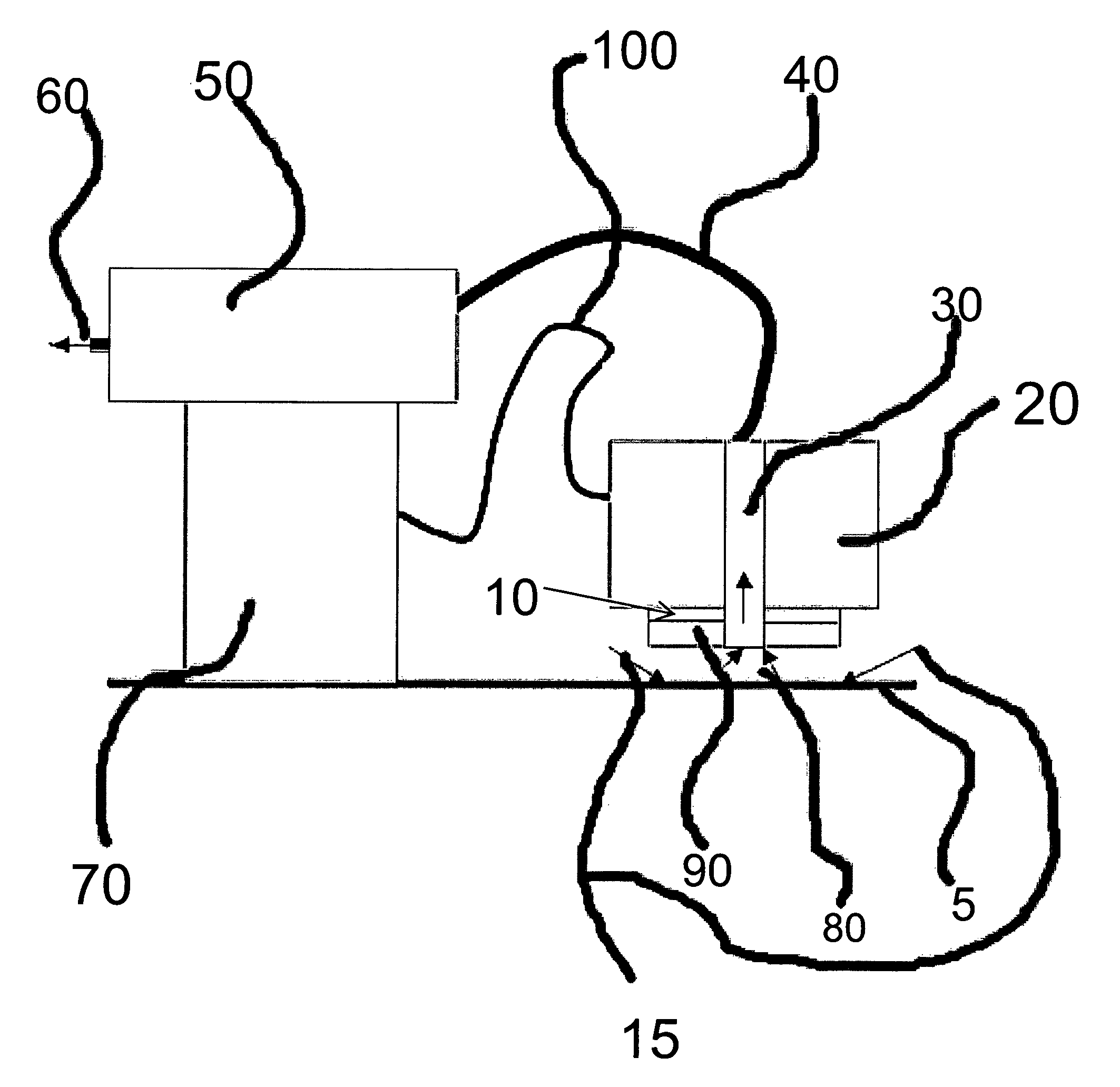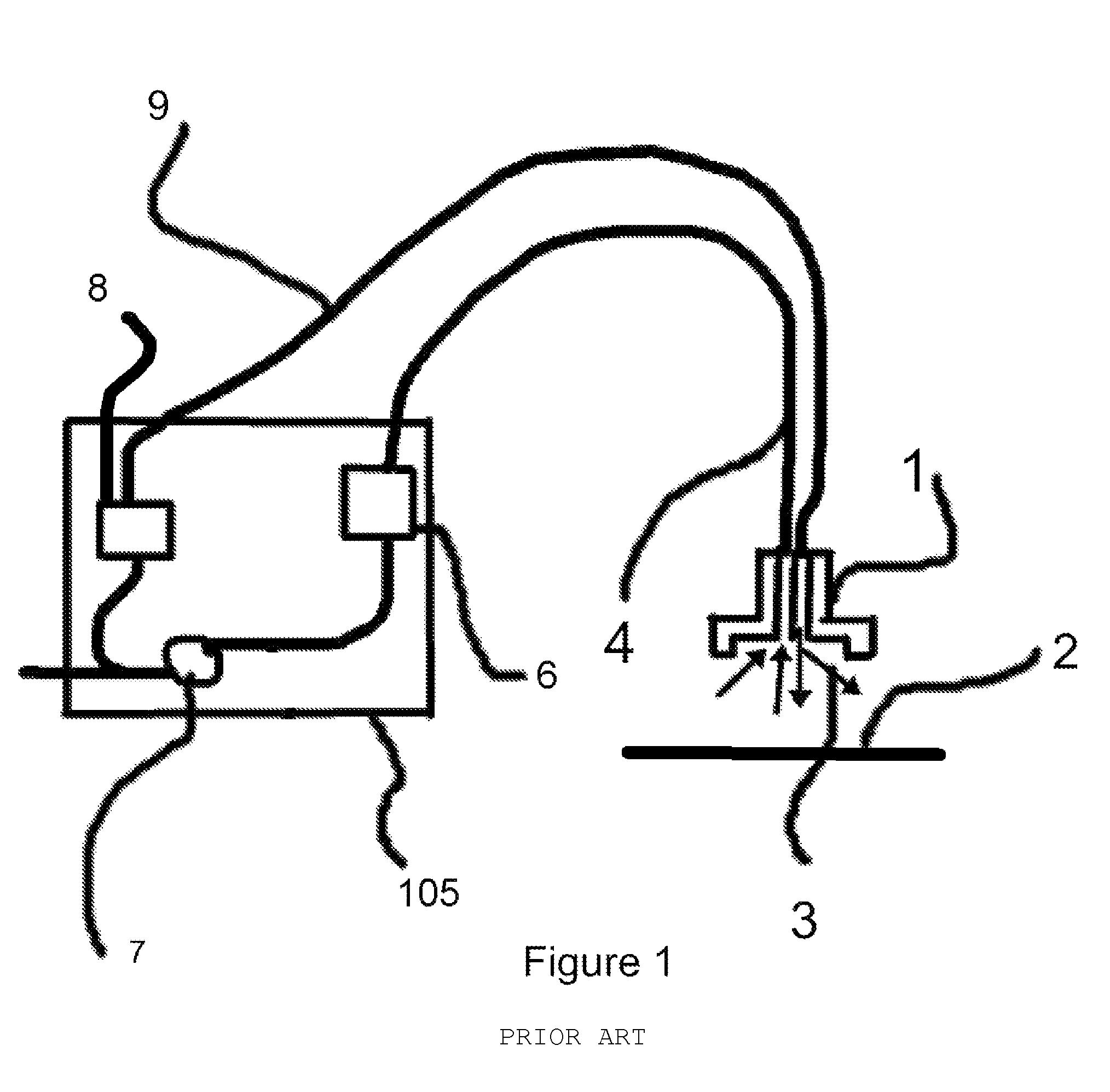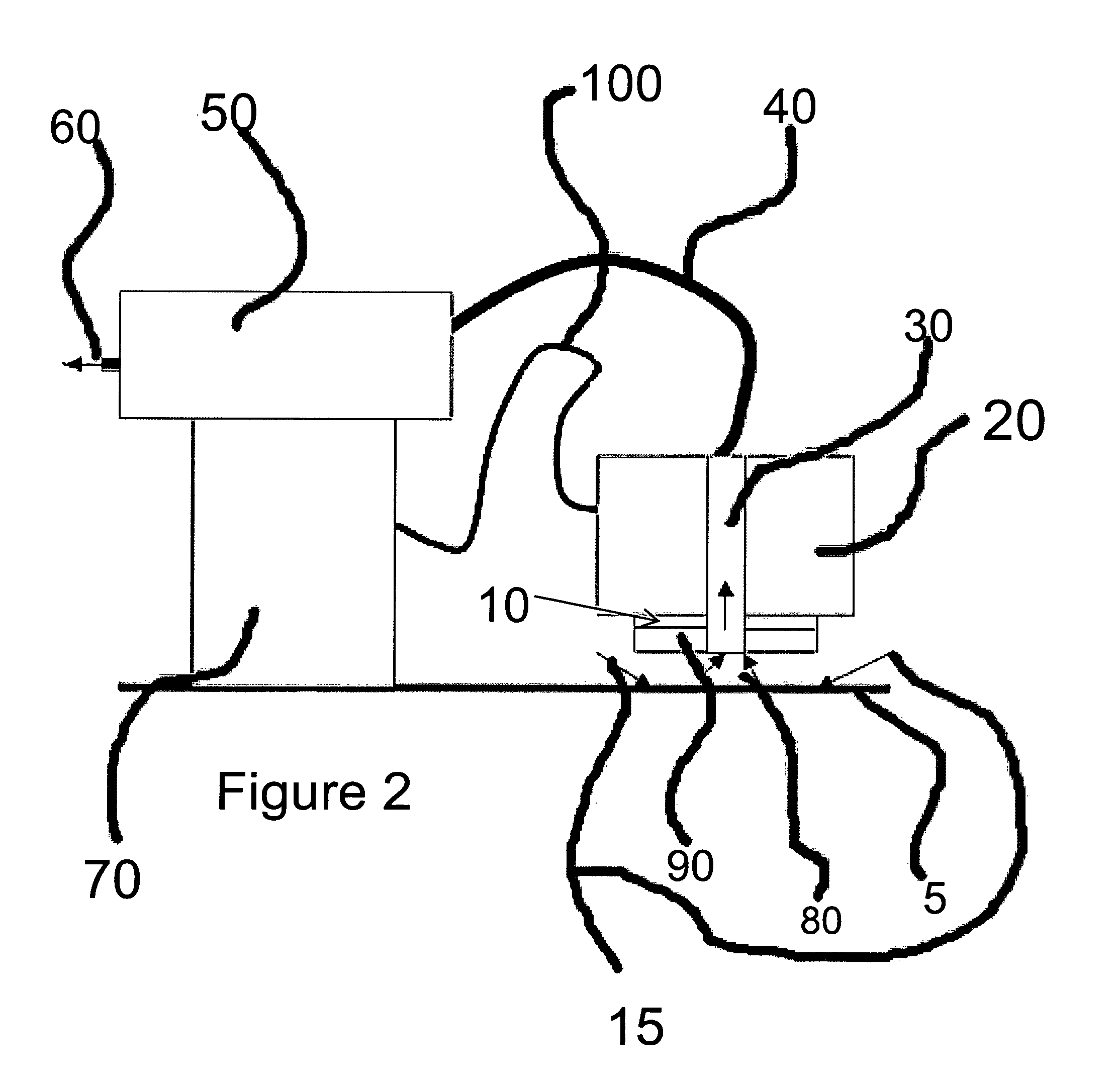Surface particle counter
a particle counter and surface technology, applied in the field of scanners, can solve the problems of particle loss, particle transport from the surface to the particle counter, inaccurate readings of the particle counter, etc., and achieve the effect of vastly improving the overall efficiency of the particle-counting device and eliminating a number of steps
- Summary
- Abstract
- Description
- Claims
- Application Information
AI Technical Summary
Benefits of technology
Problems solved by technology
Method used
Image
Examples
Embodiment Construction
[0013]In FIG. 2, we see an environmental view of the present invention. In this view, we see that the scanner (10) is attached to the particle sensor (20). With the particle conduit (30) burrowed in between the scanner (10) and the particle sensor (20), both elements can remain attached surrounding the particle conduit (30) while eliminating particle traps and other elements that would otherwise cause particles to be lost during transfer.
[0014]In FIG. 2, we see that the scanner (10) and the particle sensor (20) are raised slightly above the surface (5). When the present invention is activated, the stream of airflow (15) will pass through the channel (80) that effectively separates the scanner (10) and particle sensor (20) from the surface (5). The channel (80) draws air from near the surface (5) in order to help avoid the problem of creating a vacuum between the scanner (10) and the surface (5).
[0015]Filters contained in the scanner head (90) operate to filter out the external air b...
PUM
| Property | Measurement | Unit |
|---|---|---|
| power | aaaaa | aaaaa |
| vacuum | aaaaa | aaaaa |
| area | aaaaa | aaaaa |
Abstract
Description
Claims
Application Information
 Login to View More
Login to View More - R&D
- Intellectual Property
- Life Sciences
- Materials
- Tech Scout
- Unparalleled Data Quality
- Higher Quality Content
- 60% Fewer Hallucinations
Browse by: Latest US Patents, China's latest patents, Technical Efficacy Thesaurus, Application Domain, Technology Topic, Popular Technical Reports.
© 2025 PatSnap. All rights reserved.Legal|Privacy policy|Modern Slavery Act Transparency Statement|Sitemap|About US| Contact US: help@patsnap.com



